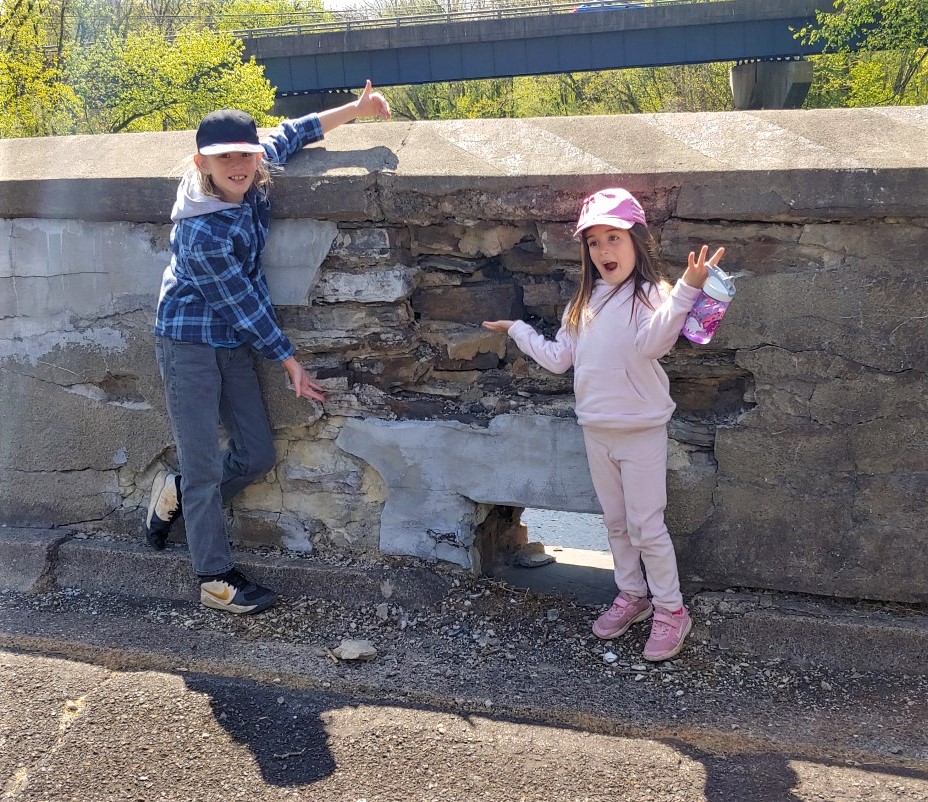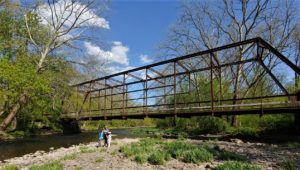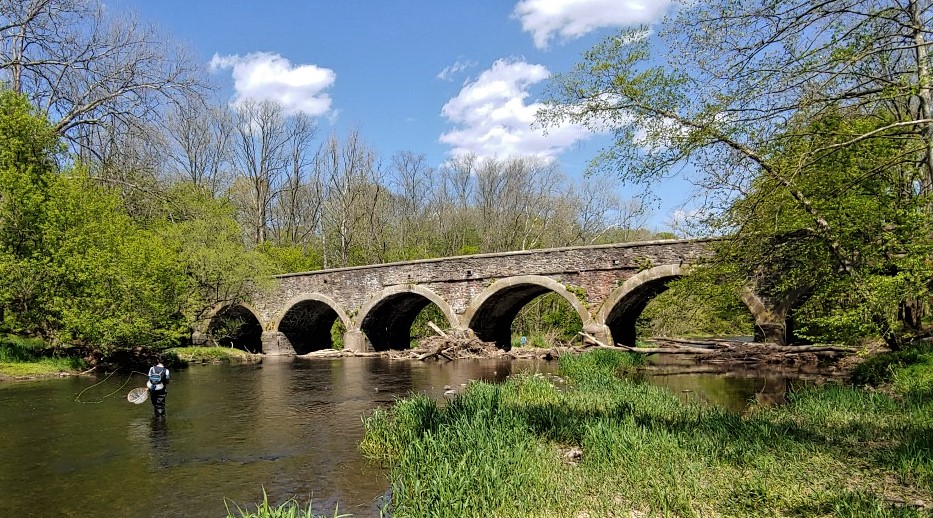A crumbling architectural marvel from 1804 in Warwick needs a savior.
I recently suggested an adventure to the grand kids: “Let’s go see the bridge no one wants.”
So off we went to Old York Road where it ends at Eight-Arches Bridge over Neshaminy Creek in Warwick. The 216-year-old stone span was designed to last forever and built at a cost of $15,561.40 – about $300,000 today. That included board and whiskey for the workers at the nearby Pettit Inn. In the end, they completed a spectacular, one-of-a-kind bridge in Pennsylvania.
Eight-Arches is a work of art. Unfortunately, a closer look reveals patchwork to keep the span from further erosion. An SOS is out for someone with deep pockets to restore Eight-Arches. Warwick’s historical society which owns it is unable to do so. Most of its budget goes to preserve the nearby Moland House where Lafayette joined George Washington and his encamped 11,000-man Continental Army in 1777.
Dashiell, Margaux, mom Genevieve and I scoured Eight-Arches from one end to the other. Traffic hasn’t crossed in 50 years. Margaux stopped to peer into small, rectangular openings on the deck. “Look! There are holes in the bridge!” she shouted. I explained they’re “scuppers” to allow rainwater to drain down to the creek. Elsewhere white splashes of recent masonry fight off erosion eating the span’s ramparts.

The bridge was built in 1804, only 27 years after George Washington marched his army over the creek at this very location on a timber bridge. During the Civil War, a regiment of Bucks County soldiers crossed the stone bridge on their way south to battle Confederate troops. Before railroads came along, the Swift Sure Stagecoach Line darted over on three daily runs from Barley Sheaf Tavern in Philadelphia to New York City and back. Testifying to the endurance of the bridge was the great flood of 1865 that ripped apart every other bridge downstream including eight covered bridges.
So here we were striding in the footsteps of history. How is it that a small historical society in Warwick ended up with the only eight-arch bridge in Pennsylvania?
In 1971, the state turned it over to county government after a new bypass opened upstream. By 1983, the bridge fell into disrepair and possible demolition. That’s when the non-profit Heritage Conservancy offered to take it. The county agreed, committing $50,000 toward repairs. Warwick promised to throw in $20,000. The rest would come from public grants and private donations. The bridge was repaired and maintained over the next 20 years at a cost of $300,000. The Conservancy also listed it on the National Historic Registry. In 1993, the Warwick historical society agreed to take ownership for $1 amid promises of federal community block grants that would pay for repairs.
Since then, those grants have dried up, creating a dilemma. Society President Dave Mullen in 2018 contacted a dozen local, state and federal officials including state Sen. Robert Tomlinson and Congressman Brian Fitzpatrick to seek solutions. Only two replied – the Conservancy and Warwick government. Both were sympathetic but with no offer of funding other than urging grant applications. As Dave told me a few weeks ago, “This is one of those situations that will get no publicity until we either sell the bridge (we have contacted real estate agencies) or close the property to visitors because of safety.”
That would be a shame. In 1984, Kathryn Auerbach of the Conservancy emphasized the historic value of the bridge. “It is not only the premier example of the stone arch bridge form in Bucks County but also the county’s oldest standing structure of public architecture.” County Commissioner Andrew Warren at the time opposed any more funding. As he put it, “We’d be hard-pressed to maintain that bridge. It connects nowhere to nowhere.”
Not exactly. A well-trodden, scenic trail leads downstream from the bridge a little more than a mile to the closed Mill Road iron bridge. After learning the state Department of Conservation and Natural Resources awarded grants to maintain bridges if connected to trail systems, Warwick was hopeful. To qualify a trail must be wide enough for hikers and bikers, perhaps macadamized. Not the case at Eight-Arches.
Still, the state is missing out on a treasure – a rare bridge on a beautiful section of the Neshaminy with dense forests, marshlands, high bluffs, wildlife and flora everywhere plus a creek to splash around in. In our hike, we enjoyed it all and encountered a fisherman holding up a large turtle so the kids could take a closer look before releasing it. Explained Margot, “That’s the most beautiful turtle I’ve ever seen!”
Bridge Valley is destined someday to become the new Dark Hollow County Park and Neshaminy Greenway Trail. To have such a rare and beautiful stone bridge as a centerpiece makes sense and would be quite a draw. Here’s hoping something is done to make that vision come true – before it’s too late.
Sources include “Historic Bridge is Falling Down” by Hal Marcovitz published by the Morning Call on Feb. 7, 1990. Thanks to Dave Mullen of the Warwick Township Historical Society for his help. The society can be reached by calling 215-918-1754, emailing molandhouse77@gmail.com or going to the society’s website, https://moland.org/warwick-township-historical-society/

